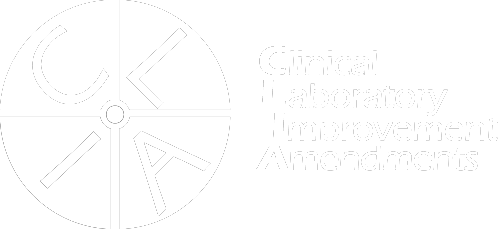By: Dr. Jermaine Davis
The Averhealth management team recently met in person for education and training for the first time in two years. We were honored to have Dr. Jermaine Davis as our keynote speaker on the topic “Thriving as a Team.“
Dr. Davis is a professor of Communication at Century College and Organizational Leadership at St. Catherine University in Minnesota. Due to his experience with our industry, we asked him to share some wisdom with our readers about how to recognize, acknowledge, and praise teams on the front lines – in this case, those challenged with heavy caseloads, staffing shortages, and continued high rates of substance use.
Here is his guest blog contribution:
When I was in high school, I loved working for DeWayne Reeves. He was the store manager of Regal Shoes in downtown Chicago. As a 9th grader, DeWayne hired me as a part-time shoe stocker and eventually promoted me to a part-time sales associate. Why did I love working for him? Simply, DeWayne cultivated a high-trust work environment where he demonstrated to his employees that he truly appreciated and valued their unique contributions. He celebrated his employees more often than not. Because of DeWayne’s authentic and genuine approach to leadership, he was able to influence his employees to do their best—each and every shift they worked.
Unbeknownst to him and his approach to leadership, DeWayne was utilizing an employee engagement practice that I coined in 2007, known as The R.A.P. Philosophy. Did you know—great leaders, managers, and coworkers often utilize The R.A.P. Philosophy? This practice communicates to employees up, down, and across the organization that they are needed and valued. DeWayne was able to motivate the unmotivated and inspire the uninspired by the way he positively communicated, engaged, and interacted with his staff on a daily basis.
What is R.A.P.?
So, what is The R.A.P. Philosophy? How do you best use this approach to help you build healthy teams and organizations? The R.A.P. Philosophy is an acronym that stands for Recognition, Acknowledgement, and Praise. It is a communication tool used to improve and increase employee engagement, morale, and motivation. Consider the following examples and illustrations as you contemplate creative ways on how to incorporate The R.A.P. Philosophy into your team and organization’s current work climate and culture.
Recognition is the practice of paying close attention and noticing the contributions that others are making throughout your organization. Recognizing the exemplary and positive work of others requires you to be attentive, mindful, and inquisitive. Recognition is the highest form of awareness. In Latin, recognition means “to know.” According to Gallup Polls, 65% of employees haven’t received any form of recognition for good work in the last year.
Leaders, managers, and employees who practice the art of recognition convey to others that I see you, I notice you, and I am keenly aware of how you add value to our work environment. Recognizers are in the loop, not out of it. Recognizers know that accomplishing workplace goals can only happen when employees are committed and dedicated. When employees feel valued and appreciated, they commit to using their talents, abilities, gifts, and skills to move their team and organization forward. Conversely, when employees don’t feel valued and appreciated, they withhold their talents, abilities, gifts, and skills.
Acknowledgment is the practice of accepting and admitting that something is real or true. It is admitting that your colleague may have done a better job than you on a particular project. To acknowledge that something actually happened or occurred requires you to be humble and willing to communicate your appreciation to others, verbally and nonverbally.
Acknowledgment is an act of selflessness because you make others matter as you highlight and spotlight their contributions. It is an act of selfishness to ignore other people’s hard work and contributions. A lack of acknowledgment is an epidemic in many workplaces across the globe.
Acknowledgment is communicating what you saw, heard, and experienced during the recognition phase. Remember, recognition says to individuals “I see you.” Acknowledgment is verbalizing and communicating to an individual what you specifically saw. Acknowledgment will never see the light of day if you do not give credence to recognition. It is giving people their roses while they are still alive and they can smell the roses. When was the last time you acknowledged someone’s hard work and commitment to a project? Complimenting someone’s effort does not cost any money—only humility, time, and the crafting of a few words to share.
Praise is the practice of showing admiration and appreciation for a job well done. When was the last time you praised and celebrated the SWV’s (successes, wins, and victories) of others inside your organization? To praise means to celebrate the accomplishments of others up, down, and across your organization. Praising others means complimenting the efforts of a project or goal they are currently working on.
Lack of appreciation a problem
According to Forbes, 79 percent of employees who quit their jobs claim a lack of appreciation was a major reason for leaving. If their leaders and managers had appropriately praised them more often, they would have not only stayed at their jobs—they would have been more engaged while working. Great leaders and managers use praise as a form of positive motivation and inspiration. This helps employees persist in the face of adversity when times are especially uncertain, unstable, and unpredictable.
Will you be the person on your team and inside your organization that utilizes The R.A.P. Philosophy on a consistent basis? Will you utilize it in its most authentic and purest form to help reduce employee turnover and to increase team morale, motivation, and momentum? Remember, The R.A.P. Philosophy begins with you—please, lead the way of positive change for your team and organization.
Dr. Jermaine M. Davis is a Professor of Communication at Century College and Organizational Leadership at St. Catherine University in Minnesota. He’s an international keynote speaker, communication strategist, and the author of “Leading with Greatness!”



